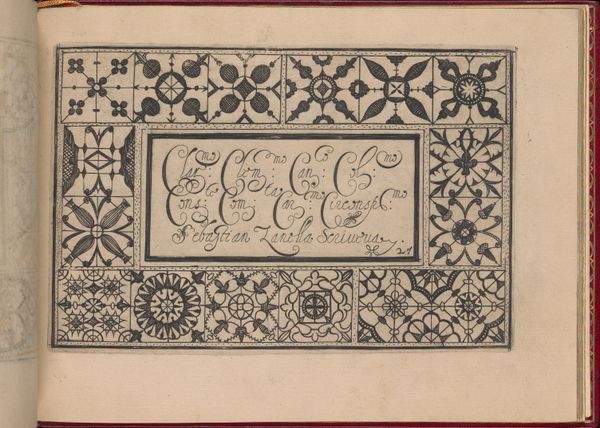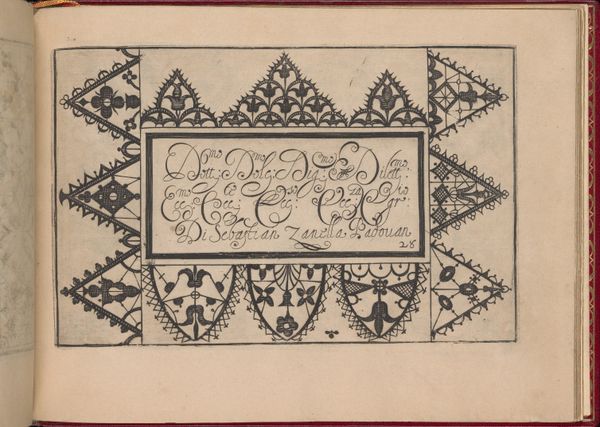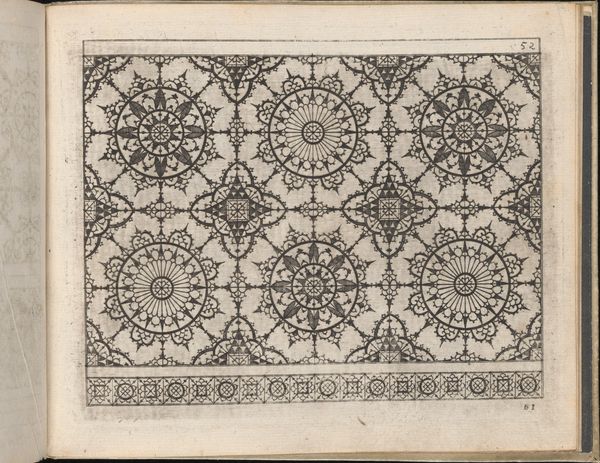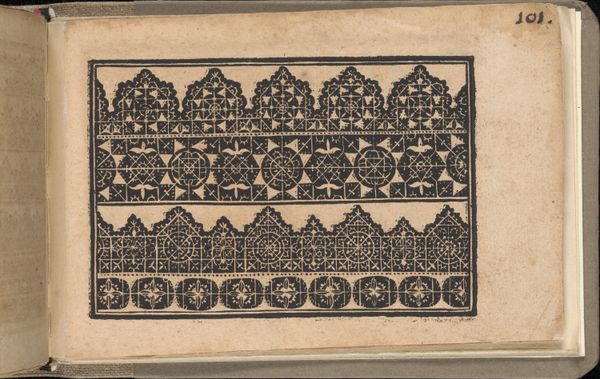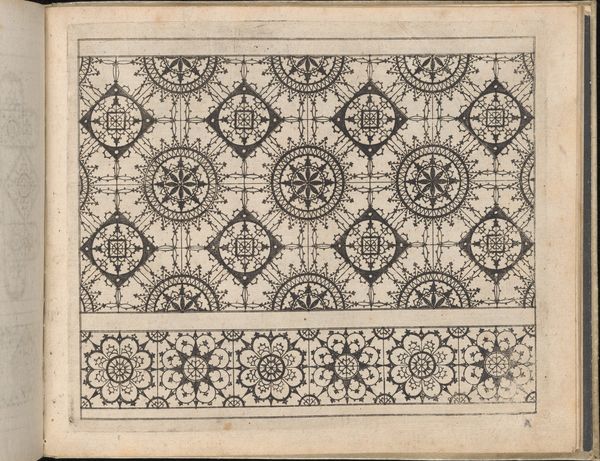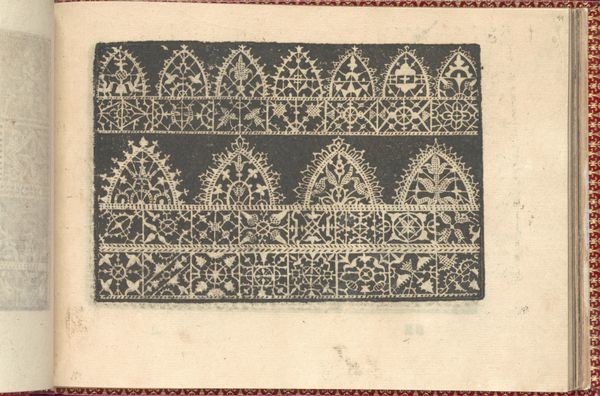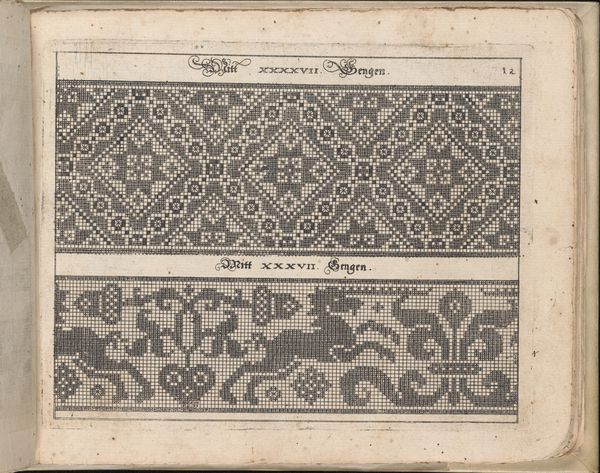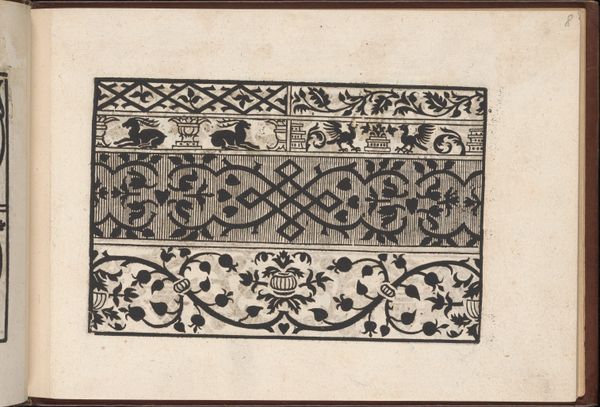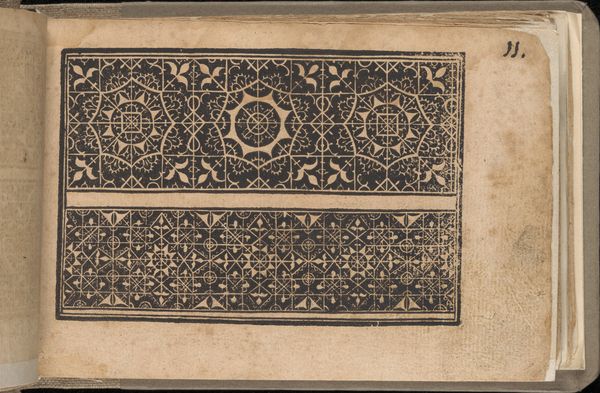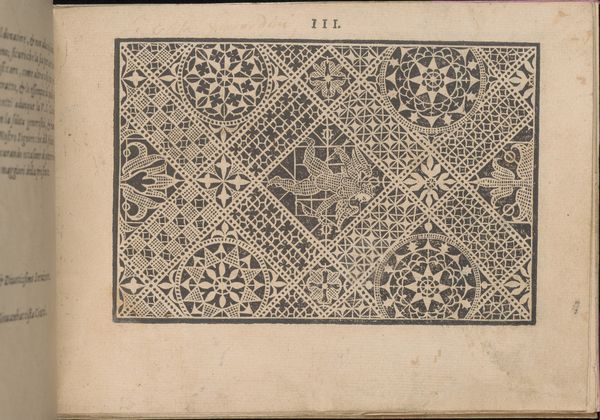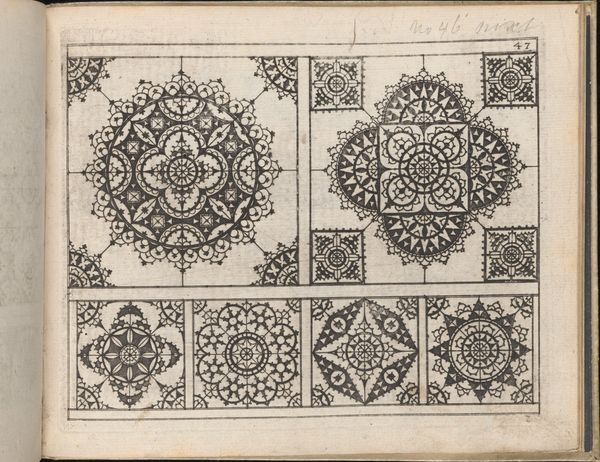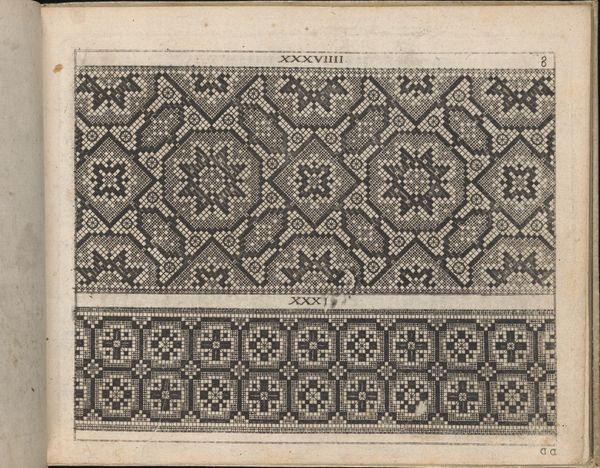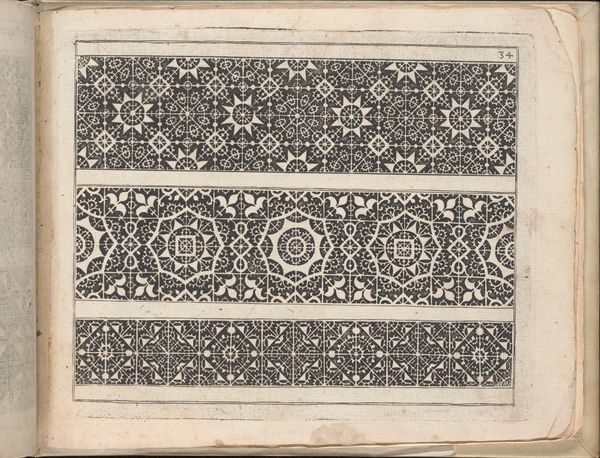
Ghirlanda: Di sei vaghi fiori scielti da piu famosi Giardini d'Italia, page 34 (recto) 1604
0:00
0:00
drawing, ornament, print, etching, paper, ink, engraving
#
drawing
#
ornament
# print
#
etching
#
paper
#
ink
#
geometric
#
line
#
northern-renaissance
#
decorative-art
#
engraving
Dimensions: Overall: 5 7/8 x 7 7/8 in. (15 x 20 cm)
Copyright: Public Domain
Curator: This delicate print is entitled "Ghirlanda: Di sei vaghi fiori scielti da piu famosi Giardini d'Italia, page 34 (recto)"—part of a larger series. It’s an engraving from 1604 by Pietro Paulo Tozzi. Note the refined linework and the way it’s meticulously organized on the page. Editor: It feels like a blueprint for lace, or a pattern sampler. There's a mesmerizing quality to the repetition and symmetry, yet each motif is unique. It evokes a sense of Old World craftsmanship. Curator: Precisely. These pattern books served as vital resources in the 16th and 17th centuries. The production and dissemination of prints like this supported decorative arts, impacting social mobility and access to design. This particular plate comes from a set intended to promote Italian garden design across Europe. Editor: Interesting. The motifs themselves speak volumes. We see flowers, geometric figures, and abstract shapes. There’s a subtle dialogue between nature and artifice that suggests cultivated taste and human imposition onto the natural world. They almost read as emblems with hidden significance. Curator: I think you are spot-on with that assessment! The images promoted the Italian garden tradition and were meant to influence elite social aesthetics across geographical boundaries. This sort of symbolic messaging mattered, especially as gardens and their features often were potent symbols of social power and humanistic aspirations. Editor: And you see that even in what appears to be abstract patterns! The way shapes are mirrored and interlaced echoes not only natural forms, but also suggest cosmic harmony. We can view them as allegories of human achievement. Curator: Absolutely. This era emphasized both visual refinement and complex hidden meaning in objects. It gives a more grounded vision of decorative and applied art; more so than the common narrative might suggest. Editor: Reflecting on it, this plate does a lot of cultural work in a relatively small space. More than just ornamentation; it's an artifact steeped in cultural aspirations. Curator: Indeed. Tozzi's Ghirlanda provides a lens through which we understand 17th-century notions of taste, power, and the circulation of ideas.
Comments
No comments
Be the first to comment and join the conversation on the ultimate creative platform.
